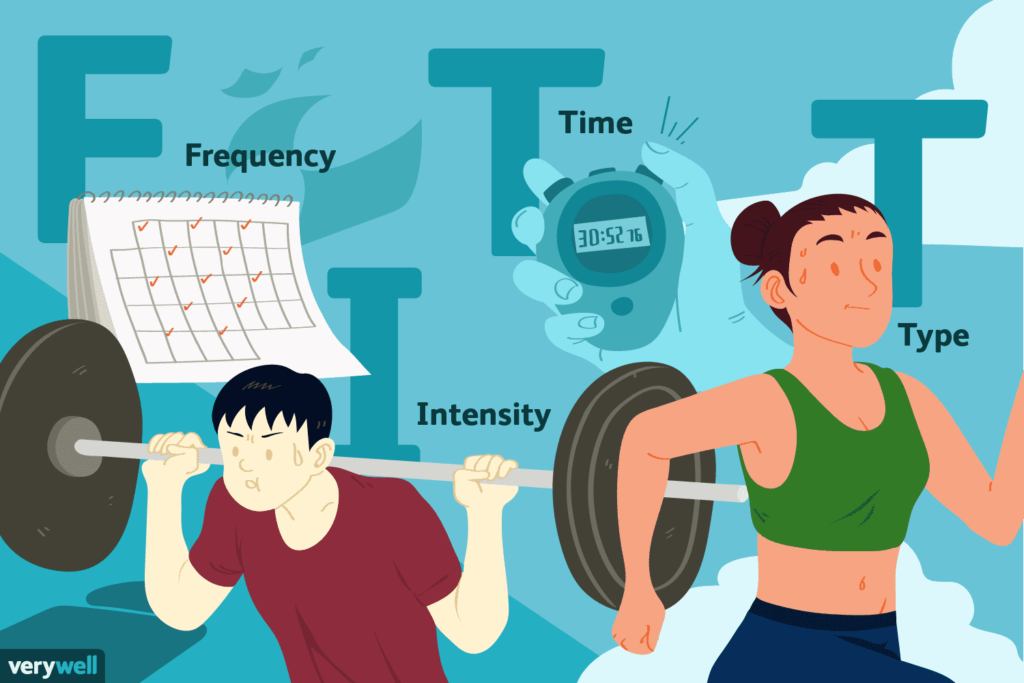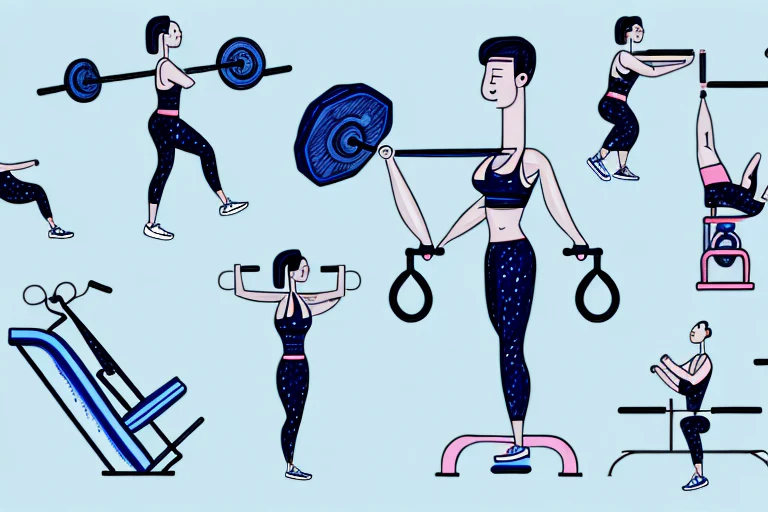How often you exercise depends on your goals and fitness level, but for general health, aim for 150 minutes of moderate activity weekly.
This guide breaks down everything you need to know about how often you should work out, with a focus on setting realistic and effective fitness routines.
Exercise Frequency by Fitness Goal:

Before determining how often you should exercise, it’s essential to clarify your primary fitness goal. Different goals require different exercise strategies.
For General Health:
If your goal is to maintain overall health, you should aim for at At least 150 minutes of moderate-intensity aerobic exercise or 75 minutes of vigorous-intensity exercise per week.This could translate to about 30 minutes a day, 5 days a week. You can achieve this by walking, cycling, swimming, or dancing.
For Weight Loss:
If your goal is weight loss, it’s essential to increase both the frequency and intensity of your workouts. Aim for **5-6 days a week** of exercise, incorporating a mix of **cardiovascular activities** like running or cycling and **strength training**. Cardio helps burn calories, while strength training builds muscle, enhancing metabolism. Balance these two to achieve optimal results for sustainable weight loss.
For Muscle Building:
To build muscle, you’ll want to focus on strength training exercises at least 3-4 times per week. It’s important to give muscle groups time to rest and recover between sessions, so you can split your workouts into upper body and lower body days or focus on different muscle groups on alternating days.
Types of Exercise and Frequency:

Different types of exercise require different frequencies for optimal results. Here’s a breakdown:
Cardiovascular Exercise (Cardio):
Cardio workouts like running, cycling, or swimming can be done more frequently, as these exercises focus on endurance and heart health.
- Beginner Level: Start with 3-4 days a week for 20-30 minutes. As your stamina improves, increase the duration or frequency.
- Intermediate/Advanced Level: Aim for 4-6 days a week, depending on your fitness goals.
Strength Training:
Strength training focuses on building muscle, improving strength, and boosting metabolism.
- Beginner Level: Start with 2-3 days per week with full-body workouts to allow time for recovery.
- Intermediate/Advanced Level: You can increase to 4-5 days a week using a split routine, focusing on different muscle groups on different days.
Flexibility and Mobility Work:
Flexibility exercises, like yoga or stretching, can be done every day. These exercises improve range of motion, prevent injuries, and aid recovery after strength or cardio workouts.
- Beginner to Advanced Level: Try to incorporate 10-15 minutes of stretching or mobility work into your daily routine.
Rest and Recovery: Why It’s Essential:

While frequent exercise is important, rest days are equally crucial. Muscles grow and repair during rest, so overworking them can lead to burnout or injury. Here are some tips:
- Take 1-2 rest days per week if you’re exercising 5-6 days a week.
- Active recovery like light stretching or walking can be done on rest days to keep your body moving without straining your muscles.
Age and Exercise Frequency:
Your age can influence how often you should exercise and the type of activities that are most beneficial.
- Teens and Young Adults (18-35): At this stage, your body can handle frequent and high-intensity workouts. Aim for at least 5-6 days a week, combining cardio, strength, and flexibility exercises.
- Adults (36-55): As you get older, your body may take longer to recover. Aim for 4-5 days a week of mixed workouts, ensuring you include flexibility and mobility work to protect your joints.
- Seniors (55+): It’s still important to stay active, but you may want to focus on low-impact activities like walking, swimming, or cycling. Aim for 3-4 days a week of exercise, along with regular stretching and balance exercises to maintain mobility.
Signs You’re Over-Exercising:
Exercise should make you feel energized, but overdoing it can have the opposite effect. Here are a few signs that you may need to cut back:
- Persistent muscle soreness or joint pain
- Chronic fatigue
- Decreased performance or strength
- Mood swings or irritability
- Difficulty sleeping
If you notice any of these symptoms, take extra rest days and reassess your routine. You might also benefit from speaking to a fitness professional to make sure your plan is sustainable.
Personalizing Your Exercise Routine:
Ultimately, the best exercise routine is one that fits your lifestyle and keeps you motivated. Here are a few ways to tailor your workouts to your needs:
- Consider Your Schedule: If you’re short on time, even shorter workouts (20 minutes) done more frequently can still yield great results.
- Incorporate Variety: Mix up your routine with different activities like yoga, weightlifting, or swimming to avoid burnout and keep things interesting.
- Listen to Your Body: If you’re feeling exhausted or burned out, it’s okay to take a day off. Balance is key to long-term success.
Finding Your Ideal Workout Frequency:
How often you should exercise depends on your goals, fitness level, and personal preferences. As a general rule, aim for at least 3-5 days of exercise per week, mixing cardio, strength training, and flexibility work.
Always prioritize rest and recovery to avoid injury and burnout. Start slow if you’re new to fitness, and gradually increase your workout frequency and intensity as your body adapts. Most importantly, find a routine that you enjoy and can maintain in the long run. With consistency, proper planning, and listening to your body, you’ll be on your way to a healthier, fitter lifestyle.
FAQ’s
1. How often should I exercise for general health?
Aim for 30 minutes a day, 5 days a week, or 150 minutes of moderate-intensity exercise weekly.
2. How often should I work out to lose weight?
Exercise 5-6 days a week with a mix of cardio and strength training for optimal weight loss.
3. How many days a week should I strength train?
For muscle building, focus on strength training 3-4 times a week, giving muscles time to rest and recover.
4. Can I do cardio every day?
Yes, but it’s recommended to start with 3-4 days a week, increasing frequency as your endurance improves.
5. Why are rest days important?
Rest days allow muscles to recover, preventing burnout and reducing the risk of injury.
Conclusion
In summary, the frequency of your exercise routine should align with your fitness goals, whether it’s for general health, weight loss, or muscle building. Aim for at least 3-5 days of balanced workouts, incorporating cardiovascular, strength, and flexibility training. Additionally, prioritize rest and recovery to prevent burnout and support muscle growth. By listening to your body and adapting your routine, you can achieve sustainable and long-term fitness success.
Related Post
- Does Planet Fitness Have Weight Scales – Here’s What You Need to Know!
- Does La Fitness Provide Towels – Everything You Need to Know Before Hitting the Gym!
- Does 24 Hour Fitness Have A Swimming Pool – Everything You Need to Know!
- Did Planet Fitness Donate To Trump – A Deep Dive into Politics, Perception & Public Reaction!
- Can You Wear Crocs To Planet Fitness – A Complete Guide!